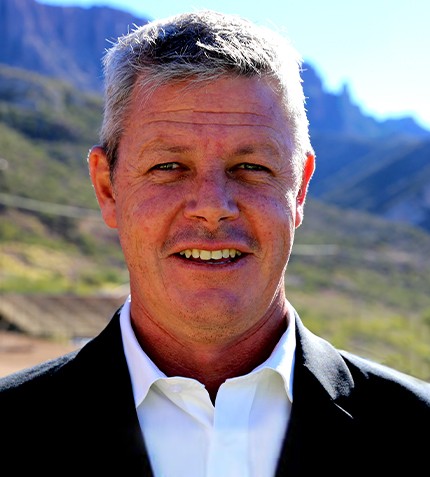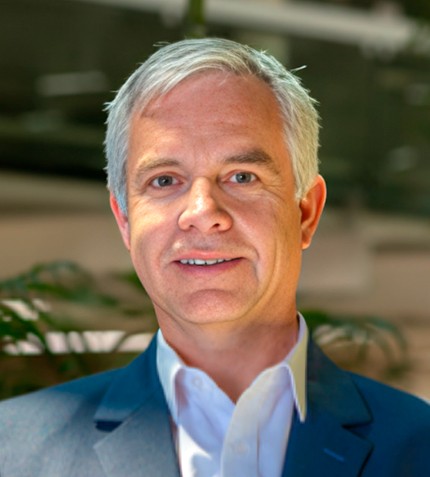
"Our proposed underground mine is expected to become the largest copper mine in North America, capable of producing up to 25% of US copper demand each year. "
Andrew Lye
VICE PRESIDENT, RESOLUTION COPPER
Can you give a brief introduction to Resolution Copper and a vision of the proposed mine?
Resolution Copper is located on the site of the old Magma copper mine in Arizona’s Copper Triangle, an area with a rich mining history and many significant producers. Rio Tinto has been involved in the project since 2001, and in 2004 we formed Resolution Copper together with BHP to redevelop mining in this area. We sit right on the doorstep of the mining district of Superior, and we are very much part of the local community.
What production levels are expected once operations commence?
Our goal is to produce 120,000 t/d, if we are granted the required approvals. The mine is estimated to produce as much as 40 billion lbs of copper over 40 years.
Our proposed underground mine is expected to become the largest copper mine in North America, capable of producing up to 25% of US copper demand each year.
What socio-economic impact will Resolution Copper have in Arizona?
Resolution Copper is one of the largest mining investments in the region. We have spent just over US$2 billion, 40% of which has been directed to our local area in Arizona. We have six communities surrounding the project, as well as 11 Native American tribes with cultural connections to the land. The relationship with communities can be complex but we have developed strong connections and outreach. The project will create 3,700 indirect and direct jobs, and it will contribute about US$1 billion annually to the state’s economy.
We are also making great efforts to develop a workforce for the future. For example, we offer an annual scholarship program that provides financial assistance to local students pursuing higher education, while also encouraging students of promise to explore career opportunities in the mining industry and related STEM fields.
Can you walk us through the main milestones and challenges Resolution Copper has experienced in the last couple of years?
We had our EIS (Environmental Impact Statement) published on the 15th of January 2021, only to have it rescinded by the incoming Biden administration on the 1st of March of the same year. So, we are in the process of getting the EIS republished. It is a very thorough process that we began about a decade ago.
A major milestone for us in early 2021 was the successful closure of the old Magma mine site. We invested US$75 million to reclaim the old Magma copper mining tailings and the impacts from the smelter. Covid and meeting the needs of our workforce was another challenge. Balancing our operation with the flexibility our people are looking for in their work was important to us. The tightening labor market as we emerge from covid showed us the importance of adapting our work cycles as well as investing in our future workforce.
How is Resolution Copper approaching the use of water and energy at the project?
Resolution Copper is committed to becoming carbon neutral by 2050. The main way to achieve that goal is by looking at how we bring new projects online. To minimize our carbon footprint we are partnering with existing utilities. As of April 2022, 25% of the energy at our site is coming from solar sources through our partners at the Salt River project.
Water is a big focus in Arizona and considering that our mine will take 10 years to build, we have the chance to progressively implement new technologies to increase water efficiency.
Can you elaborate on Rio Tinto’s Nuton technology?
Rio Tinto’s Nuton technology is centered around producing greater amounts of copper with less impact on the environment, water resources and no large tailings storage facility. Rio Tinto has entered into a partnership with Arizona Sonoran Copper for the old Cactus Mine. So, as part of Rio Tinto’s broader initiatives, we are working on how to maximize the production of copper from existing disturbed sites through the leaching technology which has many potential economic and environmental benefits.
What are the next steps for Resolution Copper?
The most important step is to complete the Federal permitting process by cooperating with the Forest Service to have the FEIS republished.










